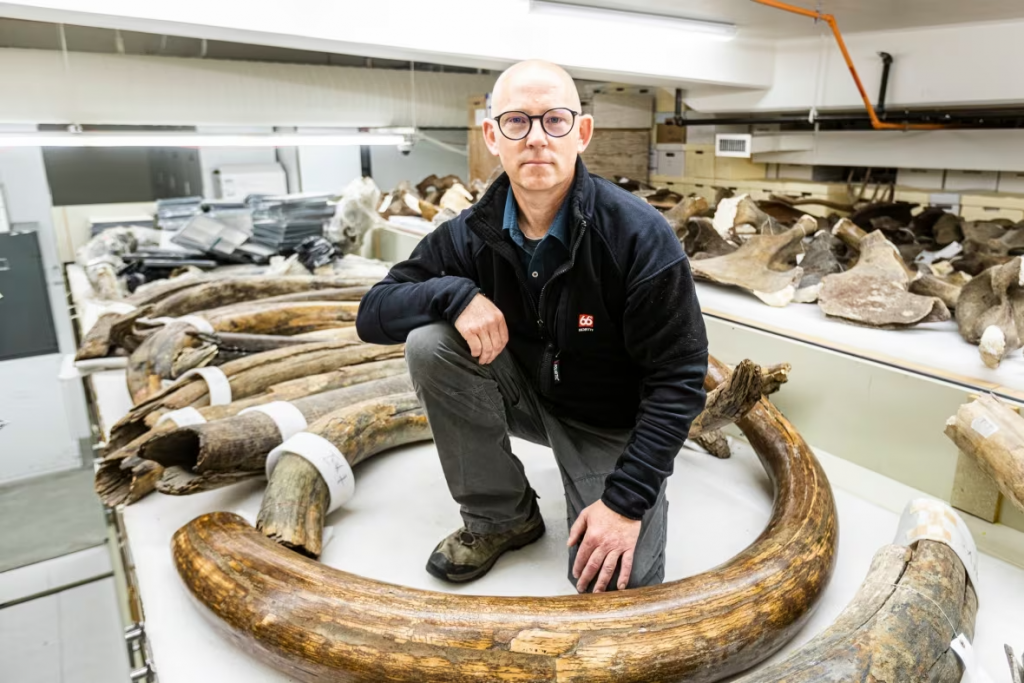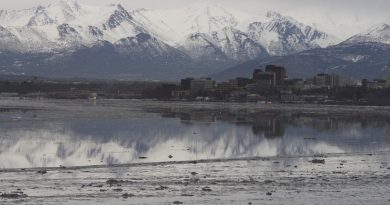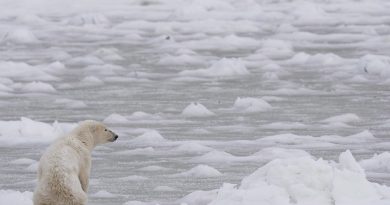Scientists trace woolly mammoth’s 1,000 km journey using its tusk

· CBC Radio
Tusk shows evidence that humans and mammoths coexisted in Alaska, says researcher
With nothing more than a tusk, researchers were able to track the 1,000 kilometre journey of a woolly mammoth that lived 14,000 years ago.
“The fact that we can actually regenerate her movement, her place along a landscape … all comes from a few remains at this site [which] gives us insight into behaviour of an animal that once existed and lived with ancestors of the first people here in Canada,” Hendrik Poinar, an evolutionary biologist at McMaster University, told As It Happens host Nil Köksal.
“I think that’s truly remarkable.”
The new study, published Wednesday in the peer-reviewed journal Science Advances, follows the journey of the mammoth, named Elma, from western Yukon to the interior of Alaska where she likely lived side by side with people.
The tusk responsible for all the information is about six feet long and was found at Swan Point, Alaska. Matthew Wooller, director of the Alaska Stable Isotope Facility at the University of Alaska Fairbanks, led a team of researchers in examining isotopes in the tusk and then compared them with levels across the landscape at that time.
Poinar says the tusk’s layers can provide a lot of detail about where it’s been.
“In the case of a tusk, it’s sort of like sugar cones on ice creams being stacked up against each other. So you have these long extensions of yearly growth on these tusks,” said Poinar.
Poinar leads a team that has performed genomic sequencing of the remains of eight woolly mammoths, including Elma’s found at Swan Point.
“What Elma’s tusk seems to show is that she was frequently in that spot, probably using it as a mating ground, a hunting ground, grazing ground. And at some point, hunters use the ground for food,” said Poinar.
Coexisting with humans
Elma got her name from the village council for Healy Lake, Alaska, which named her Élmayuujey’eh. When she was still roaming the Earth, she would’ve stood at least three metres tall with shaggy brown fur, a sloped back, a heavy pair of tusks and large feet adapted to withstand the cold.
Elma, who was about 20 years old when she died, found her final resting place in an area of Alaska that was likely a camp for early humans.
“She was a young adult in the prime of life,” said Wooller in a University of Alaska press release. “Her isotopes showed she was not malnourished and that she died in the same season as the seasonal hunting camp at Swan Point where her tusk was found.”
Poinar says Elma was likely killed by humans who were tracking large game, such as mammoths, in the area.
The researchers say evidence of human presence comes from found items that were likely used as darts or spears, similar to weapons used in Siberia where mammoth hunting has been documented.
But Poinar doesn’t believe people are to blame for the extinction of mammoths.
“It’s not surprising that a tribe in need of food would hunt some large game because it’s a huge source of protein and fat and workable material, with bones and ivory for everything from art to tools and weaponry,” said Poinar, who believes that the tusk they discovered was likely used as an anvil.
Poinar says the research doesn’t just help us understand the past, but it also frames how we think about the future.
“I think understanding how first people and these large animals interacted on that landscape is important,” said Poinar.
“How, ultimately, those animals went extinct speaks to how we need to be very careful with a warming climate.”
Related stories from around the North:
Canada: Fossils found in northwestern Canada help scientists retrace steps of ancient hyena, CBC News
Norway: Arctic underwater forests set to expand with rapid warming, Eye on the Arctic
Russia: New map shows what Bering land bridge looked like 18,000 years ago, CBC News
United States: Paleontologists discover Arctic’s first-ever lambeosaur fossil in Alaska, CBC News



